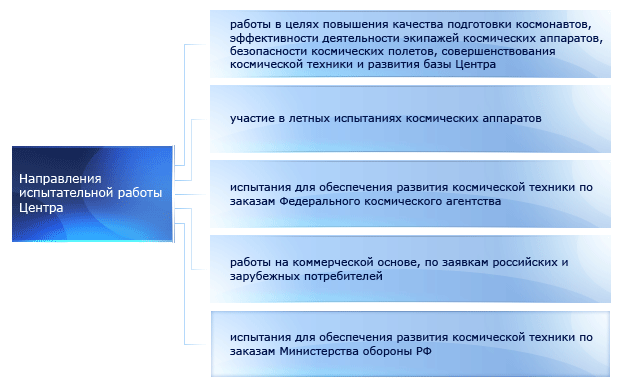The GCTC has a unique testing basis (flying laboratories, centrifuges, hydro lab, pressure chamber, isolation chamber, thermal chamber, etc.) and highly qualified test personnel. Cosmonauts, pilots, engineering and instructor staff, and other experts also take part in testing.

Since an orbital flight of a manned spacecraft is performed in a weightless environment, a space vehicle has to overcome gravity during the ascent and descent phases of its flight. Technical facilities of GCTC make it possible to conduct different types of testing in simulated environment of unfavorable spaceflight factors. Simulation of weightlessness and g-loads are the most difficult conditions to simulate on Earth.
Different techniques of weightlessness simulation on earth are used at GCTC:
- Parabolic fights, performed onboard Il-76 airplanes;
- Neutral buoyancy simulation in Hydro laboratory;
- Overhead crane weight relief;
- Placing objects in three degrees-of-freedom gimbals.
Simulation of different levels of g-loads is accomplished in the centrifuge. A unique CF-18 centrifuge was built and is in operation today. Its acceleration levels are from 1g up to 30 g’s (besides that the G-vector may be oriented at any desired direction; temperature, pressure, humidity, and gas composition inside a cabin may vary within a wide range).


